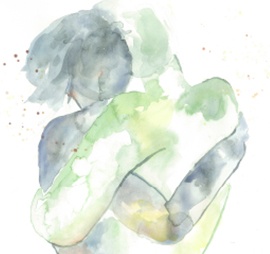Yoga
The Vedas are ancient texts from India, written in Sanskrit. They are considered to be divine truths revealed to ancient sages after intense meditation.
Meditation is a practice to bring awareness to the nature of our Self. Slowing and observing our thoughts can expose the nature of our mind, how it connects to our body, and what lies beyond the mind. Repeating mantras or the observation of our breath are common meditative approaches.
The Upanishads are part of the Vedas. These texts describe Yoga as a union of the individual soul (Atman) to the universal spirit (Brahman).
The Yoga Sutras are a collection of ancient knowledge compiled by the sage Patanjali. They are a guide of how to study the mind & the soul, and how to yoke the individual soul to the universal spirit in order to become whole & healed.
The idea of Yoga is to create a unification of body, mind, and spirit.
The physical forms of Yoga, known as asanas, are one of eight practices identified by Patanjali to study the nature of body & mind. Originally asanas were comfortable sitting poses for meditation. Modern Yoga uses asanas as exercise, a way to strengthen & balance the physical body to enable better meditative insight.
Pranayama is another practice of Patanjali’s eight-limbed path to enlightenment. It is the practice of controlling our breath, which is the main source of our Prana, or life-force.
Chinese Medicine
Lao Tzu was a Chinese philosopher (or possibly many philosophers) who lived several thousand years ago. He is usually credited with writing the Tao Te Ching, a book considered to represent the foundations of the Taoist philosophy.
The Tao is the natural order, “The Way”, which underlies the substance and movement of the universe. Taoism suggests that opposing forces are needed for harmony to exist. These balancing, inter-dependent, and transforming forces are known as Yin Yang.
Yin is the shady side of the mountain – it is darker, cooler, and moister. Yang is the sunny side of the mountain – it is brighter, warmer, and drier. Day turns into night, night turns into day. Yang turns into Yin which turns into Yang.
The Huang Di Nei Jing is an ancient text which has been the fundamental source of Traditional Chinese Medicine theory for thousands of years. It consists of two parts – the Su Wen (“basic questions”) and LingShu (“spiritual pivot”).
A healthy body & mind reflect a balance of Yin & Yang energies of the body, and an unrestricted circulation of Blood & Qi. The philosophy of Chinese Medicine is holistic, meaning the body is considered more than just the sum of its parts.
Building vitality and treating imbalance in Traditional Chinese Medicine aims to optimize circulation through the external Meridian system (using acupuncture, moxibustion, cupping, tui na, and qi gong) and balance the internal ZangFu organ system (using dietary modifications and Chinese Herbal Medicine).
Yoga & Acupuncture
These ancient practices can be combined to help balance body, mind, and spirit. Practicing physical forms of our body with breath awareness can help build our body’s strength and settle our minds. Incorporating acupuncture with the final savasana form can allow a deep level of integration and regulation.
For more information, please visit Take a Breath
For upcoming Yoga Acupuncture for Fertility & Resilience class sessions please visit our events section


